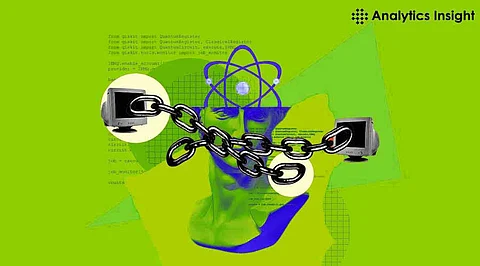

In today's digital world, ensuring the accuracy and security of data is more important than ever. With the rise of cyber threats and data breaches, protecting information has become a top priority for both businesses and individuals. A promising solution to this challenge is the combination of Blockchain technology and Artificial Intelligence (AI), which together can enhance data integrity and security.
Blockchain is a technology where information is distributed across a network of computers and is transparent, unchangeable, and secure. In this way, once the data is put in, it cannot be deleted or altered in any way. AI, however, is about creating computer programs that can learn from data, make decisions, and improve with time. In this case, when these two technologies are brought together, they can solve major problems in the management and security of data.
This would improve data security and privacy through the use of AI with Blockchain. The nature of Blockchain allows its ledger not to be amended once data has been recorded into it, thus creating a reliable information record. Analysis of this information can be conducted using AI that would detect the patterns of oddity, identify possible security risks, and give a response or an action, thus automating responses to those risks.
Blockchain and AI could be integrated towards developing decentralized AI. In a traditional approach nowadays, the data is owned by central entities during the development process of AI models, and questions arise regarding privacy and ownership issues. Blockchain has the potential to develop a decentralized system such that multiple contributors can be present in the design of AI whereas their data stay with them only. Decentralization ensures that the people who contribute with their data accurately and keep all their data safe.
The transparency features of blockchain can guide AI governance towards ethical and regulatory compliance. All activities involved in training and decision-making on the part of AI models could be recorded on a Blockchain, leaving an auditable trail of AI activity. By ensuring transparency in this manner, AI systems would be seen to conduct activities in line with ethical considerations and with the laws of concern. Thereby, this helps build trust among users and stakeholders.
The most valuable thing in the AI industry is intellectual property rights. Blockchain can be used to create a safe and transparent record of IP ownership and usage rights. This makes sure that the creators and innovators are rewarded and recognized for their efforts and prevents any form of unauthorized use or infringement.
A large number of firms are already researching the integration of Blockchain with AI for better data integrity. For example, Fetch.ai is a leading AI platform based in Cambridge that uses machine learning, Blockchain technology, and multi-agent systems to further strengthen the data's security and authenticity. Similarly, Sahara AI, a startup that has secured $43 million in Series A funding to establish a decentralized Blockchain network that pays users, data sources, and AI trainers while it attempts to address some of the ethical challenges associated with the development of AI.
While integrating Blockchain and AI offers numerous benefits, it also presents challenges. The complexity of combining these technologies requires careful consideration of scalability, interoperability, and energy consumption. Additionally, ensuring that AI models are trained on high-quality, unbiased data is essential to prevent the perpetuation of existing biases. Addressing these challenges is crucial for successfully implementing Blockchain-AI hybrids in data integrity applications.
The combination of Blockchain and AI is a transformational approach toward data integrity. Organizations can design more secure, efficient, and ethical data management systems by utilizing the security and transparency features of Blockchain and AI's analytical capabilities. The future of data integrity is expected to be transformed with the evolution of these technologies as they find integration in the face of innovation in solving the problems of the digital age.
